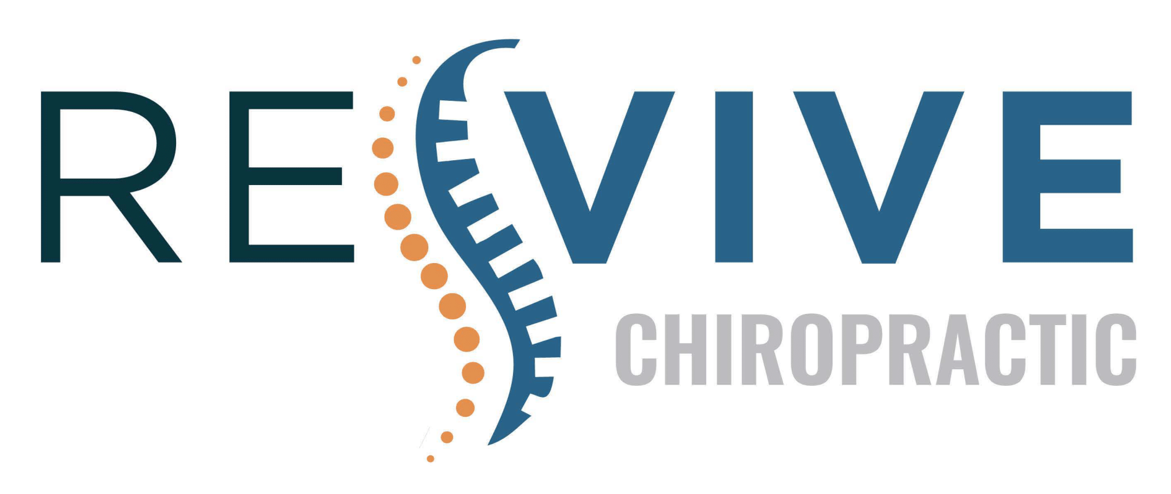If you're struggling with chronic back pain, you might be looking for effective natural remedies to ease your discomfort. From herbal supplements to dietary changes and mindfulness practices, several options could help alleviate your pain without relying on pharmaceuticals. You may find that integrating these approaches not only addresses the pain itself but also enhances your overall well-being. However, the effectiveness of these remedies can vary greatly from person to person, and understanding which ones might work best for you is essential. What could be the right combination for your situation?
Herbal Supplements
Herbal supplements offer a natural approach to alleviating chronic back pain, harnessing the healing power of nature. You might find relief in several herbs known for their anti-inflammatory and analgesic properties. One popular option is turmeric, which contains curcumin, a compound that can reduce inflammation and pain. Adding turmeric to your diet or taking it in supplement form could help ease your discomfort.
Another effective herb is ginger, which also boasts anti-inflammatory qualities. You can try sipping ginger tea or incorporating fresh ginger into your meals. Many people report improved mobility and reduced pain after regularly using ginger for their back issues.
Willow bark is another herbal remedy worth evaluating. Historically, it's been used for pain relief, and some studies suggest it may be as effective as aspirin. You can find willow bark in various forms, including teas and capsules. However, be cautious if you're sensitive to salicylates or taking blood thinners.
Devil's claw is worth mentioning too. This herb has shown promise in reducing pain and improving function in people with chronic back pain. You can usually find it in capsule or tincture form.
Before starting any herbal supplement, it's a good idea to consult with your healthcare provider, especially if you're on medication or have underlying health conditions. By exploring these natural options, you may discover a holistic approach that complements your overall pain management strategy.
Essential Oils
In addition to herbal supplements, essential oils can play a significant role in managing chronic back pain. These concentrated plant extracts possess various properties that can help reduce inflammation, relieve muscle tension, and promote relaxation. When you're feeling discomfort, certain essential oils might provide the relief you need.
One of the most popular oils for back pain is peppermint oil. Its cooling effect can soothe sore muscles and improve circulation. You can dilute a few drops of peppermint oil in a carrier oil, like coconut or jojoba oil, and gently massage it into the affected area.
Another powerful oil is eucalyptus, known for its anti-inflammatory properties. Inhaling its aroma can help clear your mind while alleviating pain.
Lavender oil is also worth considering. Its calming scent can reduce stress and promote better sleep, which is vital for healing. You might use lavender oil in a diffuser or apply it topically after diluting it.
Additionally, ginger oil has warming properties that can ease muscle stiffness and discomfort.
To use essential oils effectively, you can create a blend tailored to your needs. Mix your chosen oils with a carrier oil and apply it to your back, or add a few drops to a warm bath for a soothing soak.
Always remember to perform a patch test first to guarantee you don't have an allergic reaction. With the right essential oils, you might find a natural way to ease your chronic back pain and enhance your overall well-being.
Acupuncture
Acupuncture has a rich history that dates back thousands of years, making it a fascinating option for managing chronic back pain.
You'll find that its mechanism of action involves stimulating specific points on the body, which may help alleviate discomfort.
In upcoming sections, we'll explore what to expect during treatment sessions and how this ancient practice might benefit you.
History of Acupuncture
Dating back thousands of years, the practice of acupuncture has roots deeply embedded in traditional Chinese medicine. You might find it fascinating that this ancient technique first appeared in texts around 100 BCE, although it likely existed long before that in various forms.
Initially, acupuncture was used as a spiritual practice, believed to balance the body's energy, known as "Qi." Over time, it evolved into a therapeutic technique aimed at treating various ailments, including pain.
As you explore the history of acupuncture, you'll notice that it spread beyond China, influencing medical practices in Japan, Korea, and even the Western world. In Japan, practitioners refined the technique, introducing gentle stimulation methods and focusing on patient comfort.
By the 20th century, acupuncture gained international recognition, especially after it was featured in media coverage of U.S. President Richard Nixon's visit to China in 1972.
Today, acupuncture is widely accepted as a complementary therapy for various conditions, including chronic back pain. Its long-standing history reflects a rich tradition of healing, and you may find its enduring legacy quite compelling in your quest for natural remedies.
Mechanism of Action
Understanding the mechanism of action behind acupuncture reveals how this ancient practice can alleviate chronic back pain. When you undergo acupuncture, fine needles are inserted at specific points along your body's meridians. This stimulates the nervous system, prompting your body to release endorphins and other neurochemicals that act as natural painkillers.
As the needles penetrate your skin, they trigger a cascade of physiological responses. Blood circulation improves around the treated area, which can promote healing and reduce inflammation. You may also experience a reduction in muscle tension, helping to ease discomfort in your back.
Additionally, acupuncture influences your body's energy flow, known as Qi. By restoring balance in this energy, you might find an overall sense of well-being that contributes to pain relief.
Research indicates that acupuncture can also modulate the way your brain processes pain signals, leading to decreased sensitivity over time. This multifaceted approach makes acupuncture a compelling option for managing chronic back pain.
Treatment Sessions Overview
Typically, treatment sessions for acupuncture last between 30 to 60 minutes, depending on your individual needs and the severity of your chronic back pain.
During your first session, your acupuncturist will conduct a thorough assessment, asking about your medical history and specific pain symptoms. This helps tailor the treatment to your unique situation.
Once you're on the treatment table, you'll lie comfortably while the acupuncturist inserts thin needles into specific points on your body. You might feel a slight pinch, but most people find the process relaxing. The needles usually stay in for about 20 to 30 minutes, allowing your body to respond to the treatment.
After your session, it's common to feel a sense of relaxation and relief.
To maximize the benefits, consider the following:
- Stay hydrated before and after your session.
- Avoid heavy meals right before treatment.
- Wear comfortable clothing for easy needle access.
- Communicate any discomfort during the session.
- Follow up with your acupuncturist on your progress.
Massage Therapy
Massage therapy offers a powerful way to alleviate chronic back pain by targeting muscle tension and improving circulation. When you undergo a massage, skilled therapists manipulate your soft tissues, helping to release knots and tight areas in your back. This process can greatly reduce pain and promote relaxation, making it an effective remedy for chronic discomfort.
As you lie on the massage table, you might feel immediate relief as the therapist works through layers of muscle. They often use various techniques, such as deep tissue, Swedish, or trigger point massage, tailored to your specific needs. By focusing on areas that feel particularly tense, massage therapy can also enhance flexibility and range of motion, which is vital for overall back health.
Additionally, massage therapy stimulates blood flow to the affected areas, delivering essential nutrients and oxygen to your muscles. Improved circulation can accelerate the healing process and help prevent future pain episodes. Regular sessions may not only provide short-term relief but also contribute to long-term recovery and well-being.
It's important to communicate openly with your therapist about the intensity of pressure and any specific pain areas. This collaboration guarantees the treatment is both effective and comfortable.
Incorporating massage therapy into your routine can complement other natural remedies, offering a holistic approach to managing chronic back pain. So, if you're struggling with persistent discomfort, consider booking an appointment and experience the benefits firsthand.
Physical Activity
When it comes to managing chronic back pain, incorporating physical activity into your routine can make a significant difference.
Regular exercise not only strengthens your muscles but also improves flexibility, which is essential for reducing discomfort.
Let's explore some effective stretching techniques and the overall benefits of staying active.
Benefits of Exercise
Exercise offers a powerful solution for managing chronic back pain. By incorporating physical activity into your daily routine, you can build strength, improve flexibility, and enhance overall well-being.
Regular exercise not only helps alleviate pain but also promotes better posture and spinal alignment. When you engage in consistent movement, you increase blood circulation, which can aid in healing and reduce inflammation.
Here are some key benefits of exercise for back pain relief:
- Strengthens Core Muscles: A strong core supports your spine and reduces strain.
- Enhances Flexibility: Increased flexibility in your back and hips can prevent injury and discomfort.
- Boosts Mood: Exercise releases endorphins, helping to elevate your mood and reduce stress.
- Improves Posture: Regular activity encourages better posture, which can alleviate pressure on your back.
- Promotes Weight Management: Maintaining a healthy weight decreases the stress on your spine and joints.
Incorporating exercise into your daily life can provide significant relief from chronic back pain.
Remember to consult your healthcare provider before starting any new workout routine, ensuring it's safe and effective for your specific needs.
Stretching Techniques Explained
Stretching techniques play an essential role in alleviating chronic back pain and enhancing overall mobility. When you incorporate stretching into your daily routine, you can improve flexibility and reduce tension in your back muscles.
Here are a few effective stretches to contemplate.
Start with the cat-cow stretch. On your hands and knees, arch your back upwards like a cat, then dip it downwards while lifting your head and tailbone. This movement warms up your spine and increases flexibility.
Next, try the seated forward bend. Sit with your legs extended, and slowly reach for your toes. This stretch targets your hamstrings and lower back, promoting relaxation.
Another great option is the child's pose. Kneel and sit back on your heels, stretching your arms forward on the floor. This pose allows your spine to lengthen and relieves tension.
Finally, don't forget the piriformis stretch. While lying on your back, cross one leg over the other knee and gently pull the uncrossed leg towards you. This stretch helps release tightness in your hips and lower back.
Mindfulness and Meditation
Mindfulness and meditation can substantially alleviate chronic back pain by helping you cultivate a deeper awareness of your body and its sensations.
These practices encourage you to focus on the present moment, which can lessen the stress and anxiety often tied to chronic pain. By tuning into your body, you can identify tension areas and consciously relax them, potentially reducing discomfort.
You don't need to be a meditation expert to get started. Here are some simple techniques to integrate mindfulness and meditation into your daily routine:
- Breath Awareness: Spend a few minutes focusing on your breath. Notice how your abdomen rises and falls, and let your breath guide you to a calmer state.
- Body Scan: Lie down comfortably and mentally scan your body from head to toe. Acknowledge any areas of tension and visualize them relaxing with each breath.
- Mindful Walking: Take a short walk, concentrating on each step. Feel your feet on the ground and the rhythm of your movements.
- Guided Meditations: Use apps or online resources for guided meditations specifically designed for pain relief. These can provide structure and support as you practice.
- Journaling: Reflect on your pain experiences in a journal. Writing can help externalize your feelings and may reveal patterns related to your pain triggers.
Incorporating these mindfulness and meditation techniques can create a more profound connection with your body, fostering relaxation and promoting healing.
Hot and Cold Therapy
Hot and cold therapy can be an effective way to manage chronic back pain. By alternating between heat and cold application, you can help reduce inflammation, increase blood flow, and alleviate muscle tension in your back.
When you use heat, it increases blood circulation to the affected area, which promotes healing and relaxation. You can apply a heating pad, warm towel, or take a warm bath for about 15 to 20 minutes. Just make sure the heat isn't too intense, as excessive heat can lead to burns or increased discomfort.
On the other hand, cold therapy works to numb sharp pain and reduce inflammation. Cold packs or ice wrapped in a cloth can be applied for 15 to 20 minutes at a time. This method is particularly useful after physical activity or if you've recently experienced a flare-up.
To maximize the benefits of hot and cold therapy, consider alternating between the two. Start with heat to loosen tight muscles, then switch to cold to reduce any swelling. You can repeat this cycle a few times throughout the day, depending on your comfort level.
Always listen to your body and adjust the duration and intensity of the treatments as needed. If you notice any adverse reactions, it's best to consult with a healthcare professional.
Incorporating hot and cold therapy into your routine can provide significant relief from chronic back pain, allowing you to manage your day-to-day activities more comfortably.
Dietary Adjustments
While hot and cold therapy can provide immediate relief for chronic back pain, your diet plays a significant role in your overall health and can influence inflammation and pain levels. Making specific dietary adjustments can help you manage your pain more effectively. By incorporating anti-inflammatory foods and avoiding certain ingredients, you may notice a reduction in discomfort.
Start by loading up on fruits and vegetables, particularly those rich in antioxidants. Berries, cherries, and leafy greens can help combat inflammation. Omega-3 fatty acids found in fish like salmon and walnuts are also excellent choices, as they possess powerful anti-inflammatory properties. Additionally, spices such as turmeric and ginger can be beneficial for their pain-relieving qualities.
On the flip side, try to minimize your intake of processed foods, added sugars, and trans fats. These can exacerbate inflammation and worsen your chronic pain. Instead, focus on whole grains, lean proteins, and healthy fats, which can provide essential nutrients for your body.
Here's a quick guide to dietary adjustments that can help manage chronic back pain:
- Eat more fruits and vegetables: Aim for a variety of colors to maximize nutrients.
- Incorporate omega-3 fatty acids: Include fish and nuts in your meals.
- Use anti-inflammatory spices: Add turmeric and ginger to your cooking.
- Stay hydrated: Drink plenty of water to maintain overall health.
- Limit processed foods and sugars: Choose whole foods whenever possible.
Making these changes can lead to a healthier lifestyle and potentially alleviate your chronic back pain.
Sleep and Posture Improvements
A good night's sleep and proper posture are essential for managing chronic back pain effectively. When you sleep, your body has the chance to repair itself, but poor sleep quality can exacerbate your pain. To improve your sleep, try establishing a consistent bedtime routine. Aim for 7-9 hours of sleep per night in a comfortable mattress that provides adequate support.
If you sleep on your side, place a pillow between your knees to keep your spine aligned. If you prefer sleeping on your back, consider placing a pillow under your knees. These small adjustments can make a significant difference in how you feel when you wake up.
Equally important is your posture during the day. Poor posture can lead to muscle strain and increased discomfort. Be mindful of how you sit, stand, and move. When sitting, keep your feet flat on the floor, your back straight, and your shoulders relaxed.
If you're working at a desk, adjust your chair and computer screen to maintain an ergonomic setup. This promotes better spinal alignment and reduces strain. Incorporating regular breaks to stand, stretch, and change positions can also help alleviate tension.
Conclusion
Incorporating natural remedies into your routine can greatly alleviate chronic back pain. By using herbal supplements, practicing mindfulness, and staying active, you can enhance your well-being and manage discomfort effectively. Don't forget the benefits of hot and cold therapy, dietary adjustments, and maintaining good sleep and posture habits. These holistic approaches not only target pain relief but also promote a healthier lifestyle. Take charge of your back health and explore what works best for you!



